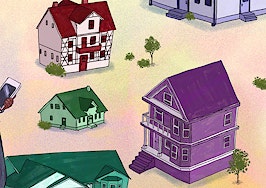Though the bloodbath of the housing bubble is unlikely to return in the near future, Realtors, real estate observers, and Inman readers are all reading the tea leaves and predicting a 2019 dominated by a flattening market and little growth.
The prospect of a softening market has been making headlines in recent months as prices, sales, and inventory all saw shifts after years of seemingly unrestrained growth. The full extent of the shift remains to be seen, but among Inman readers the most common forecast for 2019 was a tepid market, according to a pair of recent polls.
The first poll, taken on Facebook by more than 120 people as of Monday afternoon, saw a significant majority of respondents predicting a flat market in the coming year. If that happens, it could be at least in part the result of rising interest rates.

Scott Brown
“I do see a shift,” Scott Brown, an associate broker at eXp Realty in California’s Bay area, told Inman. “A lot of people are saying that these interest rates and high prices have really quenched buyer motivation.”
Brown said that in his area, many of the people who could afford to buy homes already have, and remaining would-be buyers have been priced out. They have either given up, or moved on to more affordable areas, meaning the buyer pool for the coming year is diminished.
“Not many are able to afford it now,” he added.
Brown didn’t predict a full-market collapse, akin to the bubble a decade ago, but pointed to political uncertainty and growing national debt, adding that “if the interest rates jump back up to 6, 7, or 8 percent you never know what will happen.”

Deric Rangell
Deric Rangell, a broker and owner of Sentinel Realty Partners in the Los Angeles area, offered a similar perspective, saying there is a “sense of fear” right now. He also expressed concern that the Fed could “choke the market” with rising interest rates.
“I don’t think mortgage rates approaching 6 percent at this price point can be sustained for any amount of time,” Rangell told Inman. “In the next year I think we’re going to hit a bigger stall than people think.”
Rangell, who specializes in probate sales, is already seeing home flippers failing to make a profit and open houses from people “who I never thought would do an open house in my area.”

Kenneth Harney
In a piece Monday, Kenneth Harney — a real estate columnist and past member of the Federal Reserve Board’s Consumer Advisory Council — described this ongoing trend as a “re-balancing” after years of significant growth. He wrote that it was not yet a “correction” or buyers market, but explained that sellers are cutting list prices, sales are lagging, and mortgage rates “are disturbingly high to millennials and other young buyers and magnify the affordability challenges they already face.”
“Higher rates are also daunting to the millions of owners who have mortgages with rates in the mid-3-percent to 4-percent range,” Harney wrote. “Rather than pursuing a move-up or downsizing purchase — requiring a new mortgage at today’s rates — many of them prefer to hunker down on the sidelines, further reducing sales activity.”
Rangell views the best indicator of the trend toward a softening market as the absorption rate, or the rate at which homes sell in a given market.
“I wouldn’t be surprised at all if we just crashed into having a four-month supply of inventory,” he added.
A second poll, also on Facebook, identifies a number of other indicators of a flattening market as well. A majority of those poll respondents felt that days on market was the best indicator, followed by price reductions.
The two polls are not scientific studies, but offer a telling glimpse into the mindset of some of the industry’s more active practitioners and observers.
The data also bears out many of the predictions those observers have been making. The Bay Area, for example, saw the most and largest price cuts during October since at least 2012, the San Francisco Chronicle reported. Data also shows that sales in October declined 8 percent year-over-year, while inventory shot up 21 percent.
In San Diego, new listings and median prices were both up in October, but pending and closed sales were down, the latter by 16.3 percent, according to data provided to Inman by Kyle Whissel, CEO and a team leader at the Whissel Realty Group. Whissel predicted “more of a correction than a crash” in the near future, but said that most market indicators lag by several months and conditions could ultimately prove to be more stark than they currently appear.

Kyle Whissel
He described a “flattening out” as the best case scenario, but said a dip in the market could be on the horizon as well.
“I can promise you this,” Whissel added, “prices are not going up in the next year.”
After so many years of skyrocketing growth many will likely greet this trend as bad news. But Jim Weix, an associate broker in Florida for the Keyes Company, said slower growth could be a healthy change. Weix predicted prices that were “either going to be stable or maybe even go down a little bit,” but also pointed out that interest rates are still significantly lower than what people paid a generation ago. And in many parts of the country, homes are only now recovering to their pre-Recession highs.
That means the housing market isn’t headed toward apocalypse, according to Weix. It’s just getting more stable
“What I think we’ve seen is prices have gotten to a point where the buyers have said enough,” Weix said. “We’re not going to keep having 25 percent appreciation. They’ve gotten to a point where they’re stable and that’ll be a good thing.”










